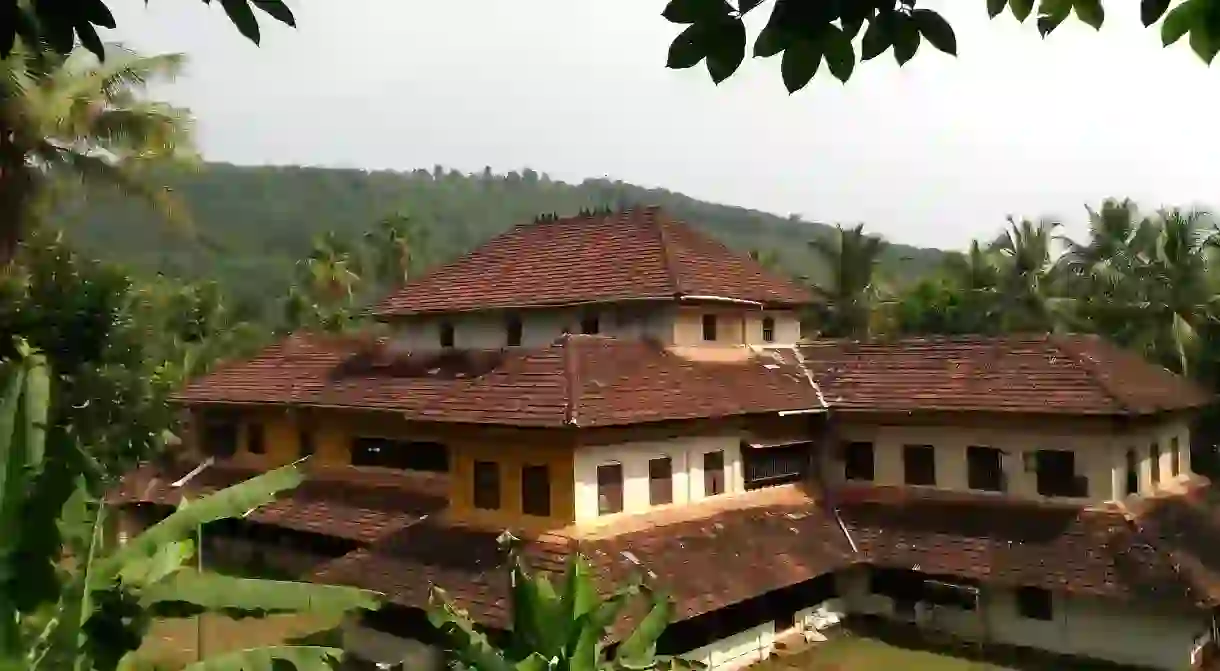The Top 16 Museums in Kerala, India

Museums are one of the first and best places to garner information about a place, its history, and culture. Yet, there are various kinds of museums that focus on different aspects of the place they are situated in. Here are 16 of the most worthwhile museums where you can enrich your knowledge about the multiplicity of Kerala.
Arakkal Kettu Museum
Museum

Arakkal Museum is a museum dedicated to the Arakkal family, the only Muslim royal family in Kerala. The museum is a section of the Arakkalkettu – Arakkal Royal Palace. The Arakkal family followed a matriarchal system of descent. While male rulers were called Ali Rajah, female rulers were called Arakkal Beevi.
Archaeological Museum Thrissur
Museum

The Shakthan Thamburan Palace, which was once the seat of the Perumpadappu Swaropam, the former dynasty of Kochi, now houses the finest murals from across Kerala. The Archaeological Museum also exhibits unique treasures like veera kallu – hero stones, temple models, ola granthangal – dry palm leaf manuscripts, and megaliths. Veera kallu are stones with engravings of figures and weapons from the bygone era.
Bay Island Driftwood Museum
Museum
The Bay Island Driftwood Museum situated in Kumarakom displays a large collection of superior quality exhibits of high artistic value. The exhibits here include root sculptures made out of driftwood that shored after traversing vast distances over the seas, making art that is intricate and awe-inspiring.
Ethnological Museum
Museum

The Ethnological Museum is a part of the Kerala Institute for Research Training and Development Studies of Scheduled Castes and Scheduled Tribes (KIRTADS) and houses a large collection of tribal artefacts including costumes, jewellery, utensils, tools, wood carvings, musical instruments, and ceremonial paraphernalia of all tribal communities in Kerala. KIRTADS is dedicated to the research and study of tribal communities to promote their development. The Ethnological Museum was opened to increase the understanding and shape a sensitivity among the urban population towards the development of the tribal communities.
Hill Palace Museum
Museum, Park

Indo-Portuguese Museum
Museum

Kerala Folklore Museum
Museum, Art Gallery, Theatre

Keralam - Museum of History and Heritage
Museum
Kerala’s history is interspersed with many myths and legends of both men and gods. Keralam – Museum of History and Heritage in Thiruvananthapuram is a joint venture by Kerala Tourism and the State Department of Archaeological to showcase and educate the visitors about Kerala’s history and heritage in an interactive manner.
Kerala Museum
Museum, Art Gallery

Kerala Museum aka Museum of Kerala Arts & History at Edapally, Kochi, is one of the oldest art and history museums in Kochi. It was founded by R Madhavan Nair in 1986 with the aim to bring focus to the rich and varied heritage of Kerala. The museum houses a wonderful art gallery that displays over 200 original paintings and sculptures by contemporary Indian artists and sculptors.
Koyikkal Palace & Museum
Museum

The Koyikkal Palace was built in the 16th century for Umayamma Rani of the Venad Royal family. Built in the traditional architectural style of Kerala, the palace is double-storey. It now houses a Folklore Museum and a Numismatics Museum. The Numismatics Museum is especially interesting with exhibits of coins from as far back as the Roman period.
Krishnapuram Palace & Archaeological Museum
Museum

Kuthira Malika Palace Museum
Museum

Napier Museum
Museum, Art Gallery

Napier Museum is a landmark building designed with unique ornamentation including a gothic roof, and minarets. The structure was built in 1855 in the Indo-Saracenic architectural style by Robert Chisholm. The museum houses a rare collection of artefacts including a temple chariot. It is also known as Government Art Museum and the architectural style is a mix of Indian, Chinese, Kerala, and Mughal Schools of Architecture.
Teak Museum
Museum, Park

The Teak Museum is a initiative by the Kerala Forest Research Institute (KFRI) to acknowledge the significance of teak wood in Kerala’s architectural history. Kerala architecture’s association with teak is very evident and conspicuous and therefore Kerala has played a central role in its cultivation and trade. The word teak itself is from the Malayalam word theku. The Team Museum celebrates this relationship by chronicling teak’s importance in Kerala culture.
Vaidyaratnam Ayurveda Museum
Museum
Ayurveda is the traditional medicine of India with a rich history spanning well over 5,000 years. Kerala’s traditional wisdom in healthcare is mostly based on the principles of Ayurveda. The Vaidyaratnam Ayurveda Museum in Thrissur showcases the richness, the variety, and the evolution of Ayurveda. The museum also includes a library of texts describing the various branches of Ayurveda.
Wayanad Heritage Museum
Museum

Wayanad Heritage Museum in Ambalavayal displays a rich collection of relics of ancient human civilisation and tribal artefacts. These exhibits stand in testimony of the fact that there had been an advanced civilisation in these mountains of Western Ghats. The archaeological excavations undertaken in various nearby regions have led to the discovery of many curios, weapons and artefacts in clay, stone, and various metals.













